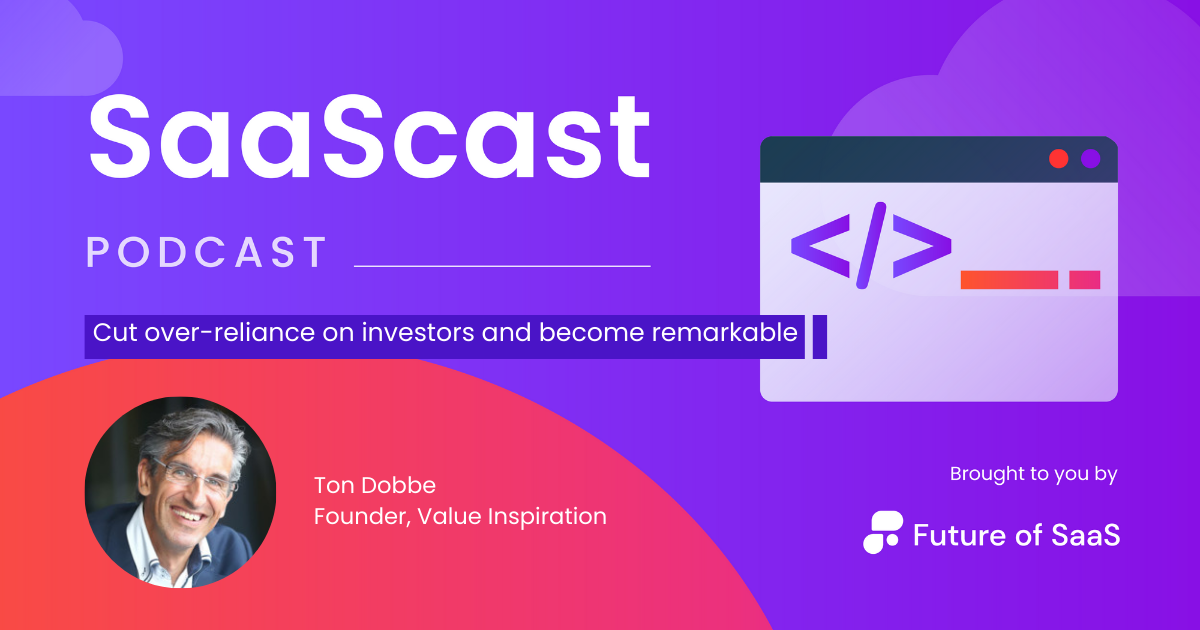Picture this: You've got this fantastic idea for a product, but you're not quite sure if it'll be a hit with customers. That's where a minimum viable product (MVP) comes into play. It's like a rough draft version of your product, stripped down to its core features and functionality.
With an MVP, you can test the waters and see how customers react to your idea. You release your business idea to the world and gather their feedback. If the response is positive and there's potential, you take that feedback and use it to make the next version even better.
The beauty of using an MVP is that you're not going all-in right from the start. You're keeping things lean and investing minimal effort and resources.

This way, you avoid wasting time and money on building a full-fledged product that might not appeal to customers. Plus, you steer clear of adding unnecessary features that you might have to change or get rid of later on.
So, think of an MVP as your way of dipping your toes in the water before taking the plunge. It's a smart and efficient approach to product development that lets you test the market and make informed decisions based on real user feedback.
Some of the biggest software brands in the world have started as a minimum viable product, and in this article we’ll dig deeper into the benefits of developing an MVP and then we’ll look closer at the different forms that an MVP can take.
Here’s a breakdown of our main talking points:
- What is a minimum viable product?
- Different types of minimum viable product
- Top examples of MVPs
What is a Minimum Viable Product?
The MVP concept is all about following the lean startup methodology, and it applies not only to individual products but to whole businesses too. The main deal with a lean startup is to get things moving quickly, while figuring out if your business model is actually viable from the get-go.

Forget about spending ages perfecting every little detail. With the lean startup approach, you're encouraged to get your product out into the world ASAP. It's like throwing a prototype out there and seeing how it flies. So, let's get lean and make things happen!
Minimum viable product vs minimum marketable product
Don't confuse a minimum viable product (MVP) with a minimum marketable product (MMP). They may sound similar, but they're not quite the same.
An MVP is like a learning tool for entrepreneurs. It's all about testing the waters and gathering data. You release an MVP to measure how users respond and get valuable insights. It's not a fully polished product, but it's got the core functionality you need to gather feedback and learn.
On the flip side, a minimum marketable product (MMP) is the real deal. It's a complete product that's ready to hit the shelves. Sure, it has the bare minimum features users need, but it's still good enough to make some sales.
Think of it as a stripped-down version that can still attract customers and generate decent revenue.
So, to sum it up: an MVP is like a learning vehicle, while an MMP is a product that's ready to be marketed and sold. Both have their place in the product development journey, but they serve different purposes. It's important to know which one you're working with and what stage you're at in bringing your idea to the market.
Minimum viable product vs proof of concept
When it comes to a proof of concept, it's like your personal experiment time. You want to see if your idea is even doable.
No customers involved just yet! You create a little project or prototype to test the technical aspects and overall feasibility of your business concept. It's like a sneak peek to make sure your idea has some potential before going all-in. So, think of it as a small-scale test drive to confirm that your concept can actually work.

But wait, there's more! Once you've got that proof of concept locked in, it's time to move on to the MVP stage. Now, we're talking about involving real customers!
An MVP is like the bare bones version of your product, stripped down to its essential features. It's your chance to get it out there and see how users react. You gather feedback, learn from their experiences, and use that knowledge to make improvements and upgrades.
Different types of minimum viable products
Depending on the kind of product that you're developing, there are many different ways of approaching an MVP. Let’s look at some of the most common varieties here:
1. Software prototypes
One of the most common types is a software prototype. Building a software prototype is both complex and widespread.
Picture this: You're creating a prototype of a software piece. It's like the early version that showcases the essence of your idea. You strip away all the frills and focus solely on the core components. It's like building the skeleton of your software without getting caught up in the fancy details just yet.
Now, why is it complex? Well, software development can be quite intricate. Your development team needs to make sure all the crucial elements are there and functioning. It takes skill, time, and effort to bring it to life.
But fear not, because building software prototypes as MVPs is a common practice. Many entrepreneurs and developers take this path to validate their ideas and gather user feedback.
2. Product designs
When it comes to using product design as a minimum viable product (MVP), there are several approaches that work like a charm, particularly for software, mobile apps, and other tech tools. So, buckle up and get ready for the options!
1. The sketch: It's the simplest way to create an MVP. You can do it by hand with a trusty pen and paper or use a digital tool. Think of it as a rough outline, giving you a visual representation of your product idea.
2. The wireframe: This one's a bit more intricate, but still totally doable. A wireframe showcases key elements like user experience, hierarchy, and navigation. It's like a blueprint that helps you map out the structure and functionality of your product, without getting caught up in fancy visuals just yet.
3 The mockup: Now we're talking about a more detailed representation. A mockup brings your product to life visually, demonstrating exactly how it will work. It's like a realistic prototype that showcases the design, features, and user interactions. It's the closest thing to experiencing the final product without actually building it.

3. Demo video MVP
Imagine you've got this awesome product, and you want to showcase its potential to the world. How do you do it? Well, one effective way is through a demo video.
Firstly, you create a video that explains what your product is all about, demonstrating how it works and the solutions it offers. It's like a virtual tour that gives potential users a taste of what they can expect. You pour your creativity into this video to make it engaging, informative, and persuasive.
Now, the magic happens when you show this demo video to potential users. It's like opening the curtains and letting them have a sneak peek at your product.
By doing so, you get a chance to gauge their reactions and see if your solution hits the mark. Are they excited? Do they find it useful? It's like a litmus test to see if your product aligns with what the market is actually looking for.
4. Piecemeal MVP
When entrepreneurs want to create a piecemeal minimum viable product, they take an interesting approach. Instead of starting from scratch, they bring together components from existing tools to demonstrate how the product will work.
Here's the scoop: Imagine you've got this brilliant product idea, but you don't have to reinvent the wheel. You look around and find existing tools or resources that already have some of the functionalities you need.
It's like putting together a puzzle, taking bits and pieces from different tools and combining them in a clever way.
5. Concierge MVP
You start by finding enthusiastic individuals who are interested in trying out your subscription service. But here's the twist—instead of building a fancy app right away, you manually handpick the products for each person. It's like having a personal shopper who curates a tailored selection just for them.
Now, this hands-on approach serves a purpose. It allows you to test things out to see if the idea hits the bullseye. By interacting directly with users and gathering their feedback, you can fine-tune your offering and make it even better.

If the idea proves to be a smashing success (which we hope it does!), it's time to level up. You take all the valuable insights and user responses you've collected and use them to build an app.
This app becomes your magical tool that analyzes user preferences and chooses the perfect products to send to each person. It's like having an intelligent algorithm that does all the heavy lifting.
6. The wizard of oz MVP
Imagine you're developing a product, but it's still in the works. Well, with the Wizard of Oz model, you put on a show and act as if your product already exists. It's like you're wearing the wizard's hat, creating the illusion that everything is up and running.
Now, this approach works wonders, especially for service-based startups. Instead of waiting for the product to be fully developed, you offer your services manually. You provide the experience as if your product is already in action, even if behind the scenes, it's more basic
Why is it ideal? Well, it allows you to validate your concept and gather valuable feedback from real customers. By engaging with them directly and observing their reactions, you can fine-tune your offering and ensure it aligns with their needs.
7. Single feature MVP
When we’re talking about this model of MVP, it’s important not to take the name at face value. Sure, you want to be looking to showcase that one particular feature that you think is really the unique selling point of your product, but it should still come grouped with other basic functionalities.
The other single feature MVP is often known as ‘the painkiller’, meaning that at the click of a button, it will immediately solve a pressing pain point that customers are experiencing. As such, the solution needs to be powerful, but also simple, its value immediately crystal clear.
Top examples of MVPs
Dropbox
The masterminds behind Dropbox had this brilliant idea to revolutionize online file storage. But before diving headfirst into the development process, they wanted to give people a taste of what was coming.
Instead of jumping straight into building the hardware and infrastructure, they took a different approach. They started with a demo video MVP. This simple video showcased the first iteration of their product, giving viewers a glimpse of how it would look and function.
And guess what? It struck gold! Overnight, the number of signups skyrocketed—without even having a tangible product ready to go. The power of that video experience was enough to captivate potential users and sell them on the idea of Dropbox. It became clear that they were onto something big.
Not only did the video generate tremendous interest, but it also served as a valuable feedback-gathering tool. People were eager to share their thoughts, validating Dropbox's product concept and paving the way for further development.
Amazon
Jeff Bezos began by taking a unique approach. He would purchase books from distributors and personally ship them to customers whenever an order rolled in on his online store.
As book sales soared, it became clear that Amazon was onto something big. This success paved the way for expanding the product range beyond books. Soon enough, Amazon began adding more and more items to its virtual shelves.
As the business grew, they made strategic moves like acquiring warehouses to enhance their logistics operations.
But it didn't stop there. Amazon's relentless pursuit of customer satisfaction led them to create a personalized experience on their website. Each user was treated to a tailored journey, with recommendations and personalized content that catered to their unique interests and preferences.
Whether you're placing orders on your desktop computer or scrolling through the mobile app, chances are that at some point you’ve one of the 1.6 million consumers using Amazon every day.
Buffer
Founder Joel Gascoigne took a smart approach. Instead of diving headfirst into building a full-fledged app, he started with a series of landing pages.
These landing pages provided just enough information to give people an idea of what Buffer was all about. The goal was to gauge interest and determine if it had the potential to become a profitable venture.
Joel promoted the first landing page on social media and asked viewers to sign up through a simple form.
The response was overwhelmingly positive, with a significant number of signups pouring in. This early validation fueled Joel's determination to take the idea further.

Building on this momentum, Joel created another landing page, this time with pricing information. This step was crucial in understanding how much early adopters were willing to pay for the app.
The response was remarkable, with many users signing up for the paid plans. It was a clear indication that Buffer had struck a chord with its target audience.
With this validation in hand, Buffer's potential was crystal clear. Joel and the team took the next steps, transforming the landing pages into a robust app for scheduling social media posts. And the rest, as they say, is history.
Facebook's humble beginnings proved to be a hit. The idea of connecting with friends online struck a chord with users, paving the way for its expansion. As more and more people flocked to the platform, Facebook recognized the need to enhance the user experience and offer additional features.
Gradually, the platform evolved and added more complex functionalities. It transformed from a basic social networking tool into a dynamic platform that offered a wide range of capabilities.
Profiles became more detailed, allowing users to express themselves and share their interests. New features like photo sharing, events, and groups were introduced, enriching the overall experience.
Facebook's success can be attributed to its ability to adapt and respond to user demands. By gradually expanding its features and functionalities, the platform remained relevant and appealing to its growing user base.
Food on the table
Here's the story: When Food on the Table was in its MVP phase, founder Manuel Rosso took a hands-on approach to ensure a delightful user experience. He personally selected recipes, curated shopping lists, and hunted for money-saving coupons, all with the goal of helping users make the most of their grocery shopping.
By gathering valuable feedback from users, Manuel discovered that the concierge model was indeed viable. People loved the concept and found immense value in the service. With this validation in hand, it was time to level up.
Airbnb
When product designers Brian Chesky and Joe Gebbia were struggling to pay rent for their loft apartment in San Francisco, they put their heads together to find a solution. Their ingenious idea? Open up their apartment for short-term rentals during a nearby conference to earn some extra income.
To bring their idea to life, they created a simple MVP—a basic website showcasing photos of their apartment for people who wanted to rent. Little did they know that their humble endeavor would yield immediate results.

Paying guests flocked to their listing, validating the demand for unique accommodation experiences. Flash forward to today and millions of users check in at different locations across the globe every single day!
What started as a quest to make some additional cash soon revealed a larger opportunity. Brian and Joe realized that there was a market for people who desired to rent out their own homes and for travelers seeking authentic and personalized accommodations.
AngelList
When AngelList was in its early stages, the team recognized the importance of starting with what they already had— their own contacts. They leveraged their personal network to kickstart the platform, facilitating connections and interactions through good old-fashioned email.
This initial approach served as a litmus test, proving the viability of the model. The positive outcomes and feedback from these early connections provided the confidence and validation needed to fuel AngelList's expansion.
To sum up
Although all SaaS companies want to create a product that’s as polished as possible, it’s important to note that customer feedback is an integral part of the product development process.
Building an MVP is a superb way to get your product out into the world, create some hype about your brand, as well as get a sense of what alterations need to be made to your product in order to truly delight and excite your customers.
The truth is: your product is never finished evolving, it’s a constant process of iteration and reiteration. The MVP is just the first step in that evolution process. Create a minimal viable product today and take that first step to launching a show stopping product.
Like what you see? Why not check out exclusive insights from some of the leading minds in SaaS with a Future of SaaS membership plan?





